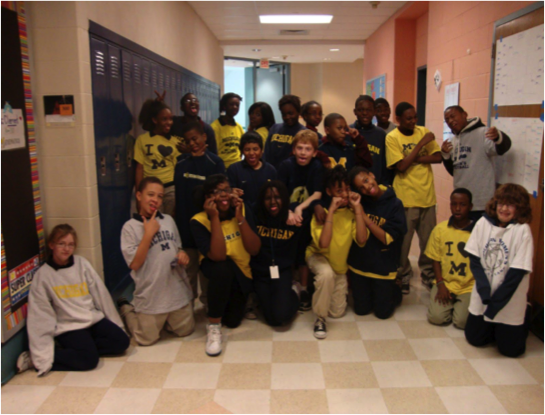Fresh out of college, I was a teacher. I really loved it. Loved the relationships formed. Loved supporting students in all the ways I could.
One of the most important lessons I learned over the summer during my teaching training was how to create a long-term plan with goals, objectives and evaluation. (Investing the students in the goals we set is a whole other post…that I’ll get to at a later day).
I learned that a long-term plan is crucial. It’s where you set your expectations for what you’re doing-how you plan backwards- how you stay sane during the year.
To use a sports analogy in regard to long-term planning, imagine winning a basketball national title without practice, regular season games, team community service ;-), and skill development drills. Now imagine establishing a community engagement program that makes a lasting positive impact on the community, student-athletes, and school without having a clear sense of how you are going to get there and what steps are necessary to achieve that goal.
You need to plan to win a national championship just like you’ll need to plan to make a positive impact through your community engagement program. On a very basic level it’s important to make sure a long-term plan has three things:
- One Big Goal
- Clear objectives to accomplish that goal,
- and ways to Measure/ Evaluate if you’re going to meet that goal.
Below I give you my basic (created in one day) Long-Term plan as if I were hired tomorrow to coordinate community service at a University.
Big Goal:
80% of all student-athletes graduate college ready to H.E.L.P.
Objectives:
- Helper: the student-athlete selects ways to help via Helper Helper, and applies life skills learned though sport to make a positive impact.
- Recognize what impacts happiness and describe how that leads to success
- Identify experiences in the community where lessons were learned or perspective changed
Evaluation: Check participation on Helper Helper and in the EOY Survey ask for the athletes to respond to questions about happiness, success, and lessons learned from community experience
- Encourager: the student-athlete supports younger student-athletes and applies their basic understanding of the value of one volunteer hour
- Models initiative and enthusiasm for helping others
- Uses data to set both a quantitative and qualitative goal for personal community involvement
Evaluation: Check participation on Helper Helper (for underclassman) and compare personal goals to actually hours
- Leader: the student-athlete uses social skills to establish a relationship within the community
- Completes one (or more) networking meetings with an outside community member
- Describes the functional relationship as it relates to life after college
Evaluation: Check Helper Helper for past commitments titled “networking” and in the EOY Survey ask for the athletes to respond to questions about developing relationships and expanding networks.
- Planner: the student-athlete organizes (potentially with other teammates) an event or initiative
- Apply experiences, relationships, and research to organize and carry out one community event
- Identify value provided for volunteers and community members
Evaluation: Check Helper Helper for student planned events and in the EOY Survey ask student-athlete if they felt their experience as a student-athlete added value to the surrounding community and themselves.

